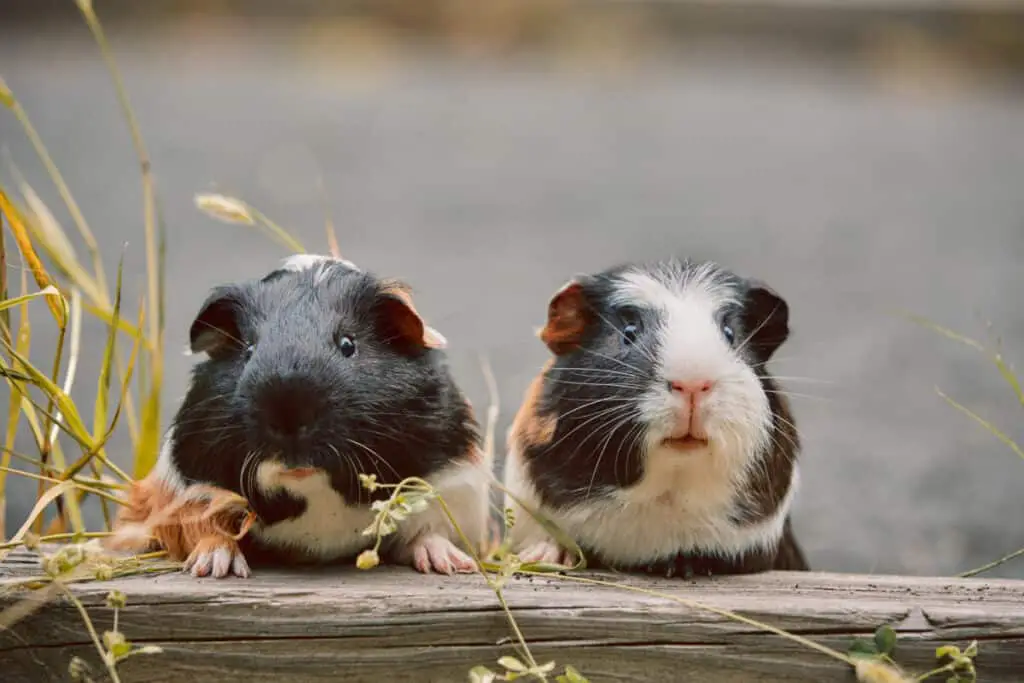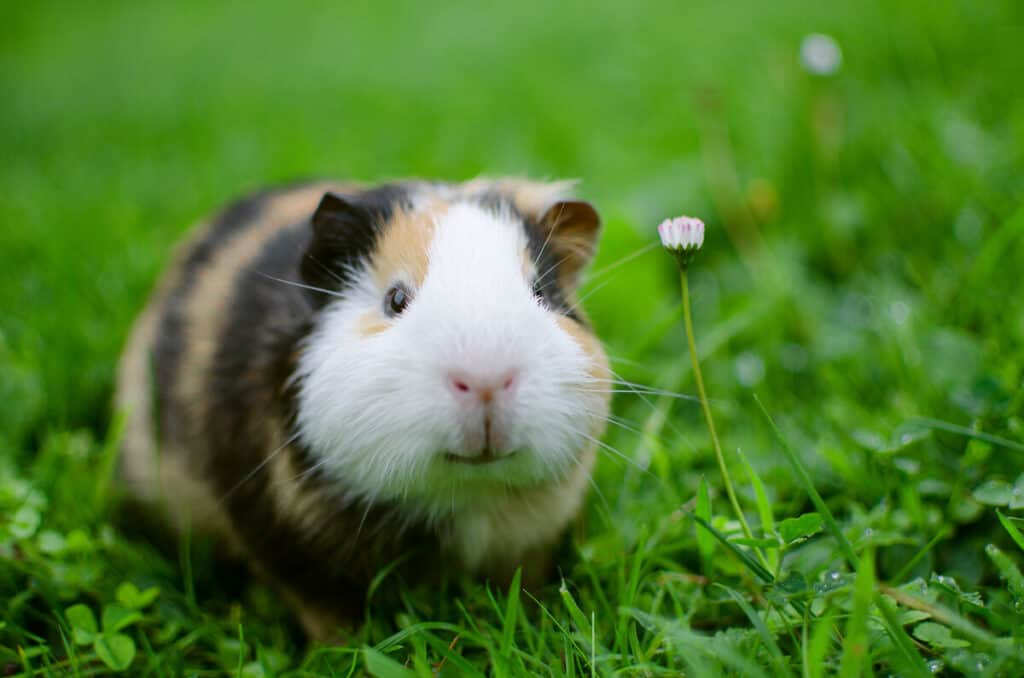Guinea pigs, also known as cavy, are small and adorable pets that have been domesticated for over five thousand years.
They were first bred in South America by the Incas who used them not only as a source of food but also in religious ceremonies.
Guinea pigs became popular among European aristocrats during the 16th century, and since then, they have become one of the most beloved household pets around the world.
Despite being an excellent pet choice for families with children or people living alone, guinea pigs still remain relatively unknown to some individuals.
Therefore, this article aims to explore different aspects of guinea pig ownership such as their history and origin, physical characteristics, behavior, diet requirements, health concerns and overall care needs.
By examining these various topics related to owning a guinea pig, readers will gain valuable insight into how to provide proper care and attention to this unique animal species.

The History And Origin Of Guinea Pigs
The evolutionary lineage of guinea pigs can be traced back to the Andes Mountains in South America.
It is said that they have been domesticated for over 7,000 years and were originally used by the Incas as a source of food and for their cultural significance.
Guinea pigs are believed to have reached Europe during the Spanish colonization of South America in the sixteenth century.
Despite being popular pets today, guinea pigs were initially bred for consumption due to their high protein content.
In fact, some traditional dishes from Peru still include guinea pig meat as an ingredient.
However, with time, these furry creatures gained popularity around the world as pets due to their playful nature and easy maintenance.
Their history and origin make them truly unique animals with a fascinating story behind them.
Physical Characteristics Of Guinea Pigs
Guinea pigs, also known as cavy or domestic guinea pig, are small rodents that originated from South America. They have a unique physical appearance characterized by their round bodies with short legs and no tail. These animals can grow up to 10 inches long and weigh around two pounds. Guinea pigs’ fur comes in various colors such as black, white, brown, and mixed shades of these colors.
Breeding habits among guinea pigs vary depending on the species. Female guinea pigs reach sexual maturity between four to six weeks old while males mature at five to seven weeks old. Their gestation period lasts for about nine weeks, after which they give birth to litters of one to eight pups.
Breeders usually pair females with male counterparts when breeding them; however, it is essential not to breed siblings together as this may lead to genetic abnormalities in newborns. Additionally, it is crucial to monitor pregnant female guinea pigs closely during the gestation period because complications can arise during delivery.
The physical characteristics of guinea pigs make them unique creatures suitable for keeping as pets or using in scientific research studies. Understanding their breeding habits is vital in ensuring responsible pet ownership and successful breeding programs aimed at promoting conservation efforts among threatened species of these animals without compromising their welfare.
Understanding Guinea Pig Behavior
Guinea pigs are social animals and have a complex hierarchy within their groups. They communicate with each other through various forms of vocalizations, which can indicate different emotions or needs. Understanding these vocalizations can help in identifying the behavior of guinea pigs.
Social behavior is an important aspect of understanding guinea pig behavior. In the wild, they live in large groups where there is a clear hierarchy among individuals. Similarly, domesticated guinea pigs also exhibit this hierarchical structure when kept together. This means that it is essential to introduce new guinea pigs gradually and carefully to avoid aggressive behavior towards each other.
Owners should observe their pets’ interactions closely to ensure they maintain good relationships and prevent any harm or stress caused by dominant behaviors.
To better understand your pet’s vocalization and social behavior, here are some tips:
- Observe body language: Pay attention to your pet’s posture, ear position, and fur texture to identify changes in their mood.
- Listen for sounds: Guinea pigs make various noises such as chirping, purring, squeaking, and rumbling; familiarize yourself with these sounds to know what they mean.
- Provide enough space: Give your pets plenty of room to move around freely; overcrowding can lead to aggression.
- Offer toys and activities: Keep them entertained with tunnels, chew toys, and puzzles since boredom can cause destructive or aggressive behavior.
By following these guidelines, owners can create a happy environment for their pets while ensuring that they have a healthy relationship with one another.
Meeting The Dietary Needs Of Guinea Pigs
Guinea pigs are herbivorous animals that need a diet rich in vitamin C and fiber. Providing them with the right kind of food is essential to keep them healthy and prevent any diseases caused by malnutrition.
Fresh vegetables, hay, and pellets should be included in their daily diet. The majority of their diet should consist of good quality grass hay such as Timothy or Orchard Grass Hay. Pellets may also be given but only as a supplement to their hay intake; they should make up less than 10% of the overall diet.
There are certain foods that guinea pigs cannot consume due to health risks. These include anything high in sugar like candy, chocolate or sweets, as well as human snacks like potato chips, pretzels or popcorn. Dairy products can also cause digestive problems for guinea pigs since they do not have the necessary enzymes required to break down lactose effectively.
Additionally, supplements containing Vitamin C can help meet their nutritional needs because guinea pigs cannot produce this nutrient on their own. However, it’s important to follow recommended dosages when administering supplements to avoid overdosing which could lead to toxicity symptoms such as diarrhea or kidney damage.
Health Concerns For Guinea Pigs
Preventive care is important for the health and wellbeing of guinea pigs, as they are prone to several common illnesses.
One such illness is respiratory infections, which can be caused by exposure to drafts or other irritants in their environment. To prevent these types of infections, it is essential to keep their living area clean and dry and avoid exposing them to cold temperatures.
Another common ailment among guinea pigs is dental problems, particularly overgrown teeth. This often occurs when they do not have access to enough roughage in their diet. Providing a balanced diet that includes hay and fresh vegetables can help prevent this issue.
Additionally, regular veterinary check-ups can catch any potential dental issues early on before they become more severe.
Taking preventative measures through proper care and nutrition can minimize the risk of common illnesses in guinea pigs. By following these guidelines and seeking medical attention promptly if needed, owners can help ensure their pets live long and healthy lives without unnecessary suffering.

Caring For Your Guinea Pig: Tips And Tricks
Guinea pigs are social animals that thrive when they have a companion or interact with their owners. The importance of socialization cannot be overstated, as it helps prevent loneliness and boredom in guinea pigs. Owners should provide plenty of opportunities for interaction through playtime, cuddling, and gentle handling. Guinea pigs also need to live in pairs or groups to avoid stress and depression.
Grooming is another critical aspect of caring for your guinea pig. Regular grooming can help keep your pet healthy and comfortable by preventing matting fur, skin infections, and overgrown nails. Brushing your guinea pig’s coat once a week will remove loose hairs, dirt, and debris while stimulating blood circulation.
Trimming their nails every three weeks is also advised to prevent them from growing too long which may cause injury or discomfort. Bathing should be done sparingly because excessive washing can strip the natural oils on the skin causing dryness.
Conclusion
Guinea pigs, also known as cavies, have been domesticated for over 7,000 years. Originating in the Andes of South America, they were first kept as a source of food and eventually became beloved pets worldwide.
Guinea pigs are social animals that require interaction with their owners to thrive. They communicate through various sounds and body language cues. Guinea pigs have a docile temperament but can be easily stressed if not provided proper care and attention.
It is important to maintain a balanced diet consisting of hay, fresh vegetables, and pellets specific to guinea pig dietary needs. Health concerns such as dental problems and respiratory infections should be monitored closely by observing changes in behavior or physical appearance.
In conclusion, taking on the responsibility of caring for a guinea pig requires commitment and attentiveness. The history and origin of these small creatures reveal how integral they have been to human society throughout time. By understanding their behavior and meeting their dietary needs while keeping an eye out for any potential health issues, we ensure our furry friends live happy lives.
As the idiom goes “an ounce of prevention is worth a pound of cure,” so it’s better to take steps towards preventing health issues rather than dealing with them later on when it might become more difficult or expensive.

